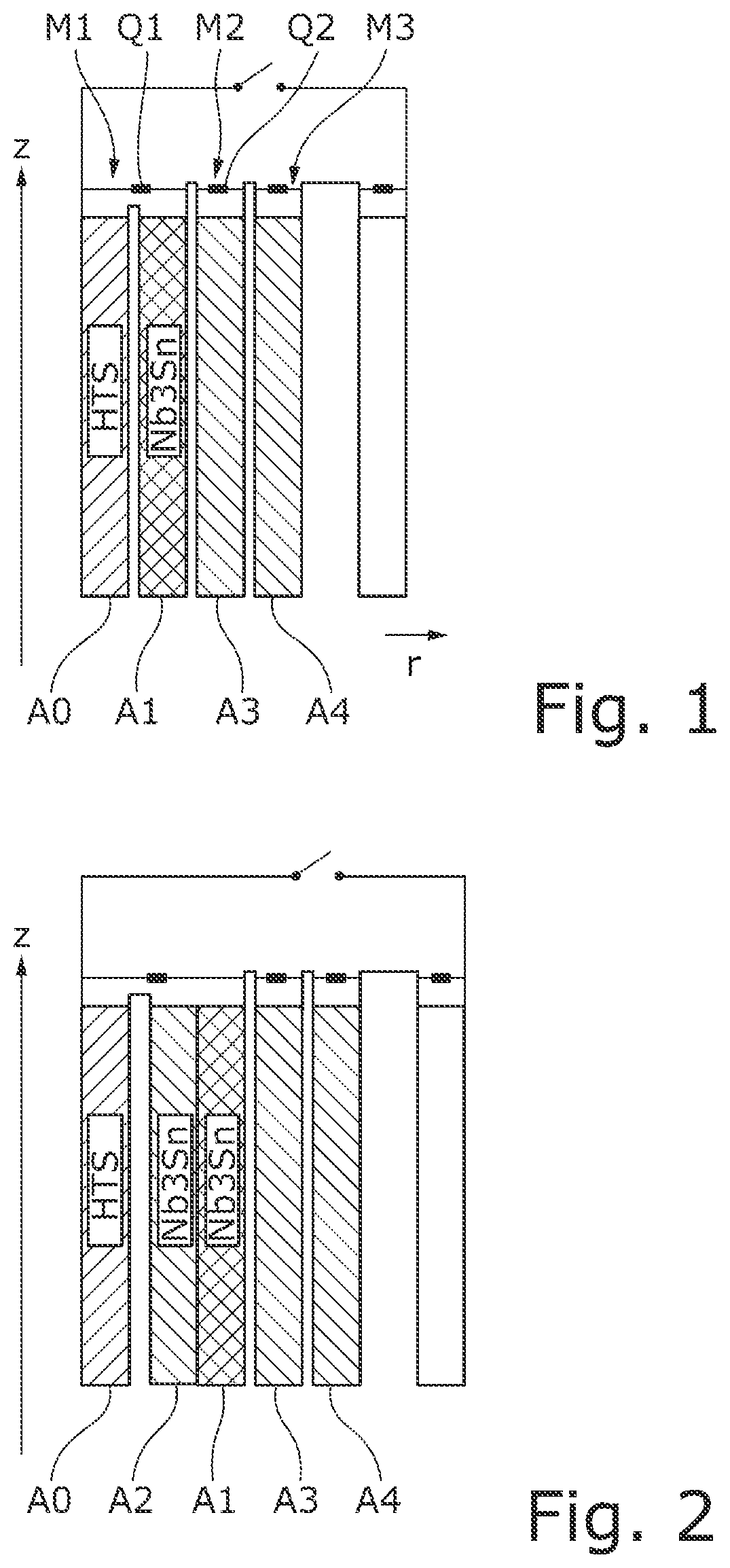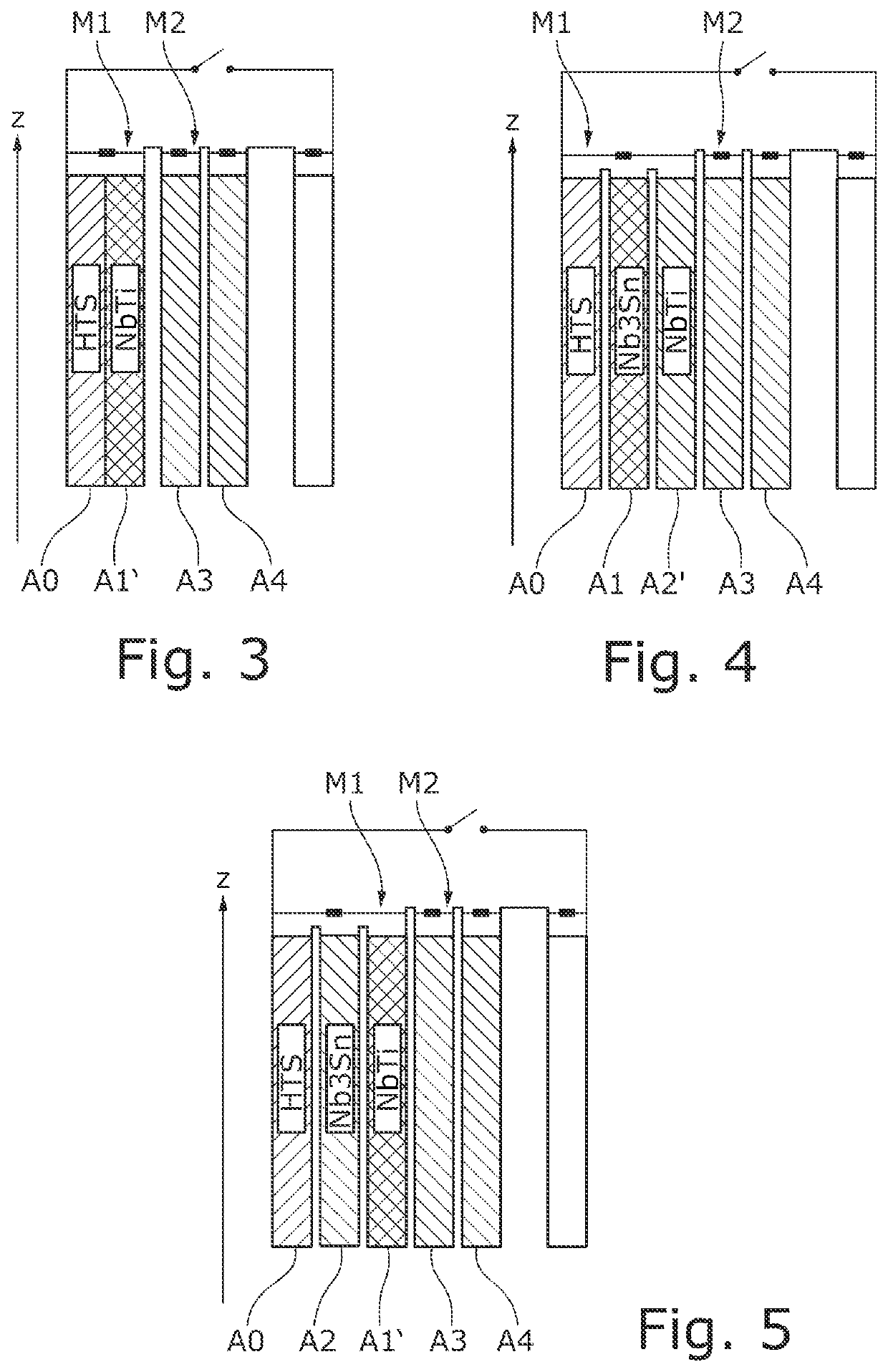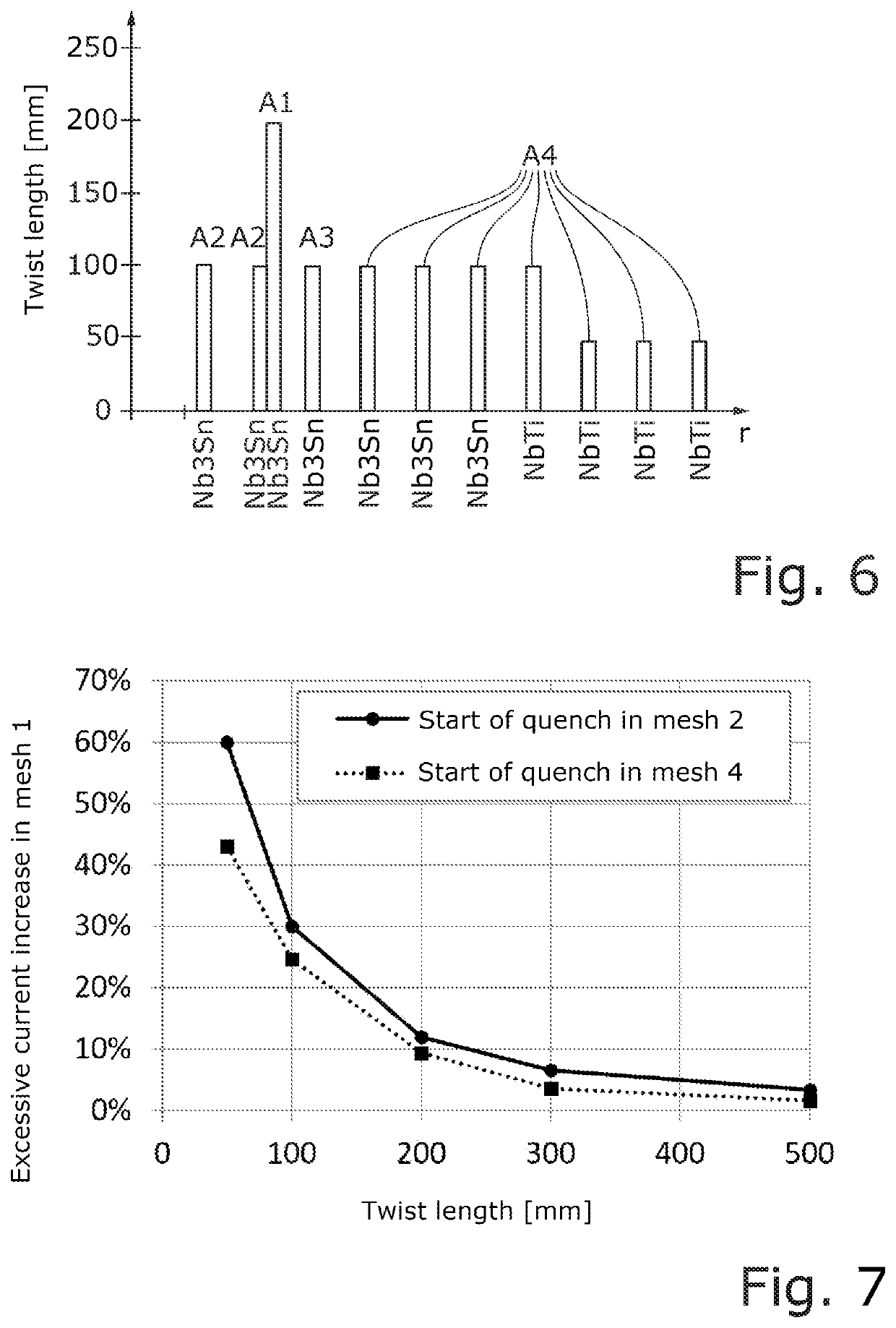Superconducting magnet coil system
- Summary
- Abstract
- Description
- Claims
- Application Information
AI Technical Summary
Benefits of technology
Problems solved by technology
Method used
Image
Examples
Embodiment Construction
[0012]This object is achieved according to the invention by means of a superconducting magnet coil system according to patent claim 1.
[0013]In the case of the magnet coil system according to the invention, in the case of a quench, the conductors of the main coil sections each generate a specific power input Pspec=(LT / 2π)2*1 / ρM, wherein the specific power input of the conductor of the first main coil section of the first electrical mesh is higher than the specific power input of the conductor of the neighbouring main coil section of the second electrical mesh. In this case:[0014]LT=twist length of the conductor comprising superconducting filaments,[0015]ρM=electrical resistivity of the matrix of the conductor (in a transverse direction), in which matrix the superconducting filaments are embedded (“matrix resistivity”).
[0016]The conductors of the first main coil section and of the neighbouring main coil section are thus twisted conductors, that is to say conductors whose filaments are...
PUM
 Login to View More
Login to View More Abstract
Description
Claims
Application Information
 Login to View More
Login to View More - R&D
- Intellectual Property
- Life Sciences
- Materials
- Tech Scout
- Unparalleled Data Quality
- Higher Quality Content
- 60% Fewer Hallucinations
Browse by: Latest US Patents, China's latest patents, Technical Efficacy Thesaurus, Application Domain, Technology Topic, Popular Technical Reports.
© 2025 PatSnap. All rights reserved.Legal|Privacy policy|Modern Slavery Act Transparency Statement|Sitemap|About US| Contact US: help@patsnap.com



